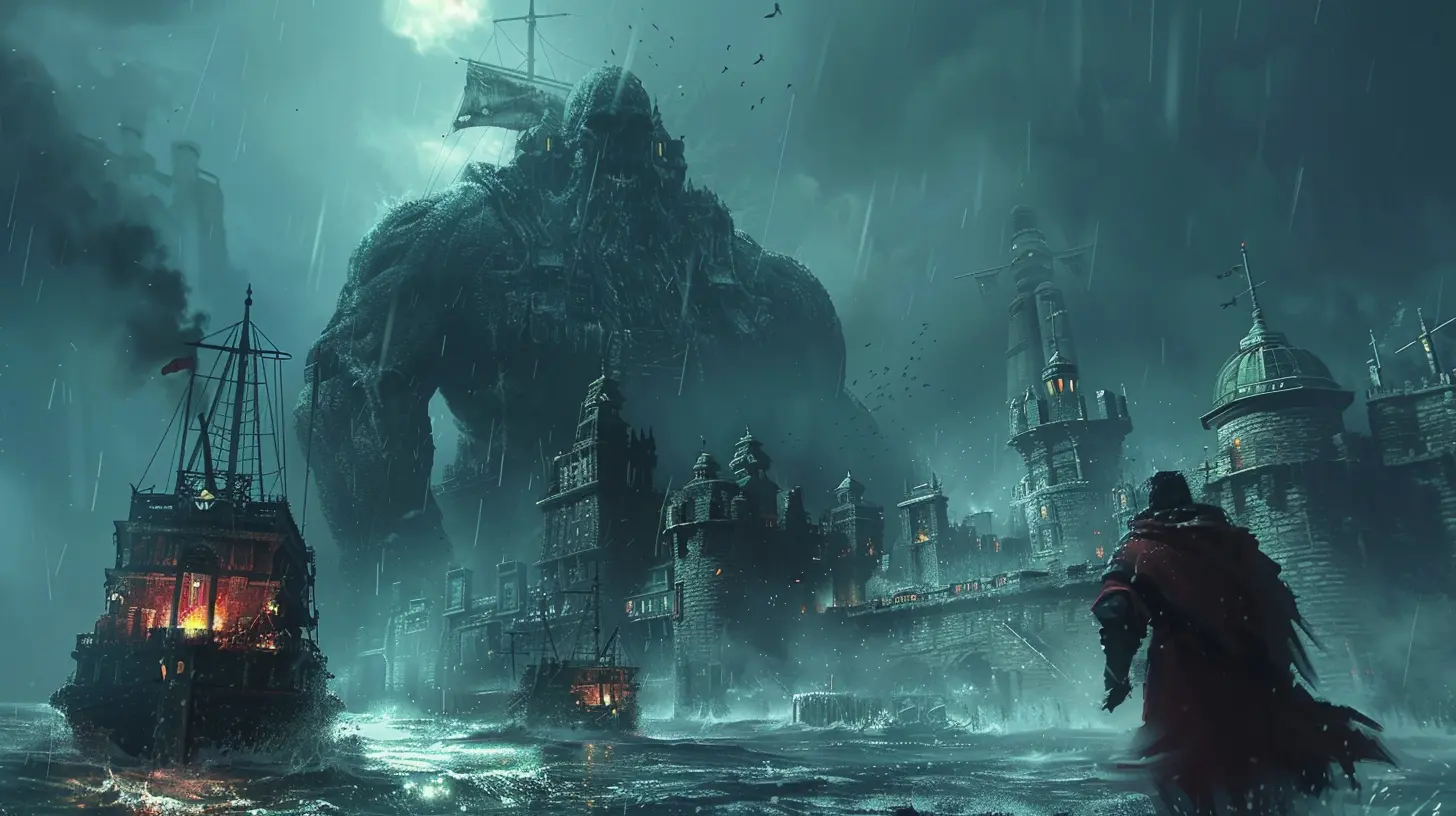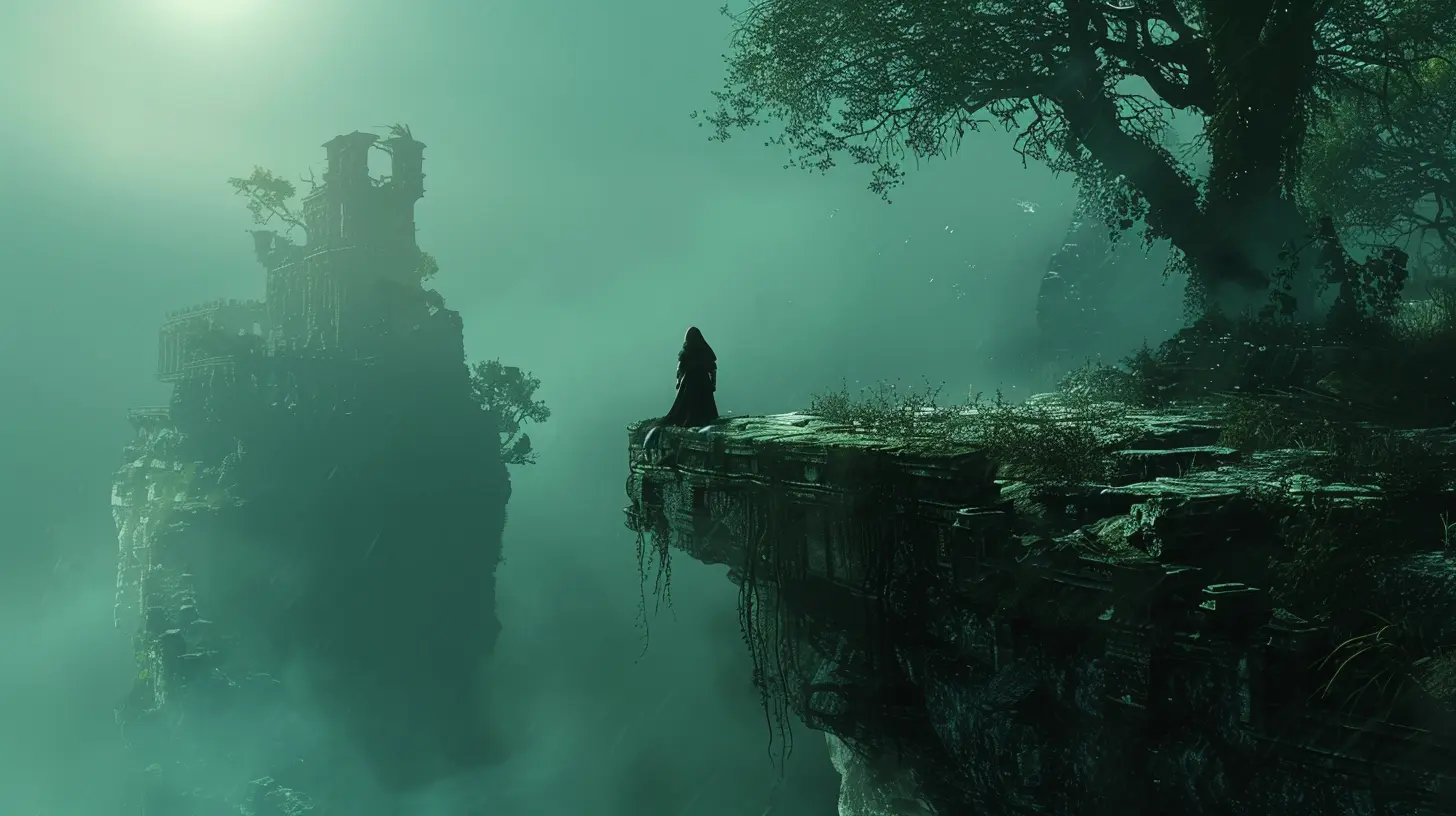When Gameplay and Story Collide: Striking the Right Balance
2 August 2025
Have you ever been totally hooked on a game—not just because the mechanics were tight or because the graphics were amazing—but because the story somehow made it all feel real? Those are the games we remember. The ones that didn’t just play well, but hit us in the feels. That’s where the magic lies: in the elusive sweet spot where gameplay and story collide.
But striking that balance isn’t easy. Some games lean too hard into flashy mechanics and forget to tell a coherent story. Others wrap you up in an incredible narrative, only to bore you with clunky controls or repetitive tasks. The challenge? Making sure gameplay and story don’t just coexist—they elevate each other.
Let’s unpack this.
Why Gameplay and Story Need Each Other
Think of gameplay as the skeleton of a game. It's the structure, the interaction, the thing that lets you do stuff. Story, on the other hand, is the soul—it gives your actions meaning.When you have great gameplay and great storytelling working hand-in-hand, it creates an emotional and immersive experience. It's no longer just about beating a level or unlocking an achievement—you're living a journey.
Let’s break it down a bit.
Gameplay First: When Mechanics Lead the Charge
Some developers prioritize gameplay because, well... it's a game after all. We’re talking tight controls, fast-paced action, and mechanics so smooth they make butter jealous.Example? “DOOM” (2016)
This game doesn’t waste time with deep emotional arcs. Instead, it throws you into a demon-infested hellscape and says, “Go nuts.” And you do. The story is minimal, more of a backdrop, but the gameplay? That’s where it shines.And you know what? That’s totally okay. Not every game needs a plot twist that rivals “Game of Thrones.” Sometimes, the fun is in the doing, not the feeling.
But here’s the kicker: even in DOOM, there’s just enough lore to give context to your rampage. It’s subtle, but it’s there. And for many players, that’s enough to feel like their rage-fueled spree has purpose.
Story First: When Narrative Takes Center Stage
Now flip the script. Some games are built around storytelling—where every line of dialogue, every environment, every musical cue pushes a narrative forward.Cue the Feels: “Life is Strange”
This game doesn’t throw combat at you. Instead, it focuses on choices, emotions, and connections. Gameplay is simple—mostly walking, talking, and making decisions. But that’s the point. The mechanics are designed to let the story breathe.Games like this prove that you don’t need complex systems to create impact. Sometimes, less is more—especially when you’re telling a story that speaks to the heart.
But again, here’s the challenge. If the gameplay becomes too basic or repetitive, players might check out. The story has to be strong enough to carry the load—and not every game gets that balance right.
The Holy Grail: When Gameplay and Story Work Together
This is where things get really interesting.When a game nails both gameplay and story, it reaches the next level. Think of it like a symphony—every part working in harmony to create something bigger than itself.
Enter “The Last of Us”
This is the poster child for balance done right. The gameplay—stealth, survival, crafting—is intertwined with a gut-punching story about love, loss, and survival. Your actions in the game matter because they affect characters you actually care about.Let’s be honest: Joel and Ellie wouldn’t have hit so hard if the gameplay wasn’t just as engaging as the storytelling. You weren’t watching their journey—you were part of it.
Another Great Example? “Red Dead Redemption 2”
A sprawling open world, filled with meaningful interactions, backed by one of the most emotionally rich stories ever told in a game. Every shootout, every horse ride, every side mission feels like it’s part of something grand.The player isn’t just playing—they’re living the story.
What Happens When the Balance Tips?
When a game swings too far in one direction, players feel it. Maybe the story is fantastic, but the gameplay is so clunky you lose interest. Or maybe the gameplay rocks, but the story’s so weak it feels like an afterthought.Some Common Pitfalls:
- Story Interrupts Gameplay: Ever been in the middle of a boss fight and suddenly, cutscene! It kills the momentum.- Gameplay Undermines Story: Ever played a serious, dark game but your character can jump off cliffs and respawn like nothing happened? That breaks immersion.
- Ludonarrative Dissonance: (Fancy word, but it matters!) It’s when the story says one thing and the gameplay says another. Like a hero who’s supposed to value life... but you’ve just shot up half the town.
When these disconnects happen, players feel confused, disconnected, or just straight-up annoyed.
So... How Do You Strike the Right Balance?
There’s no one-size-fits-all answer. But here are a few principles game devs (and even players) can keep in mind:1. Let Story Inform Mechanics
If your character is weak, your gameplay should reflect that. If they're growing stronger, make sure the player's skills or tools evolve, too.2. Use Gameplay to Tell the Story
Don’t just rely on cutscenes. Let players discover the story through exploration, choices, and interaction. Environmental storytelling is a powerful tool—use it.3. Keep Pacing in Mind
Too many cutscenes? Players get bored. Too many fights without context? Players get disconnected. Use gameplay and story beats like a rhythm—ups and downs, tension and release.4. Treat the Player Like a Co-Author
Games are interactive. Let the player feel like their actions matter to the story. Even if the ending is fixed, give them agency during the journey.Some Games That Got It Just Right
Let’s shout out a few more titles that really walked the tightrope like pros:- God of War (2018): It's not just about smashing monsters. It’s about a father and son learning to understand each other.
- Bioshock: A brilliant twist on player agency, wrapped in haunting gameplay and atmosphere.
- Undertale: A simple RPG with surprisingly deep choices—and the gameplay changes based on your moral decisions. Genius!
- Celeste: On the surface, it's a platformer. But dig deeper, and it’s a powerful story about inner struggle and self-acceptance.
Final Thoughts: Why It Matters
Games aren't just games anymore. They're art. They're stories. They're experiences. When gameplay and story collide in the right way, they don’t just coexist—they enhance one another, pushing boundaries and creating unforgettable moments.We remember games not just for what we did in them, but for how they made us feel.
So whether you're a developer crafting your next big hit or a gamer chasing the next great experience, always pay attention to the balance. Because when it's done right? It’s lightning in a bottle.
And trust me—your players will thank you.
all images in this post were generated using AI tools
Category:
Game NarrativesAuthor:

Greyson McVeigh
Discussion
rate this article
1 comments
Rhett Robinson
This article insightfully explores the delicate interplay between gameplay mechanics and narrative depth, emphasizing how a well-balanced integration enriches the player experience and storytelling immersion.
September 3, 2025 at 3:45 AM

Greyson McVeigh
Thank you for your thoughtful comment! I’m glad you found the exploration of gameplay and narrative integration insightful. Balancing both elements is key to enhancing player immersion.


